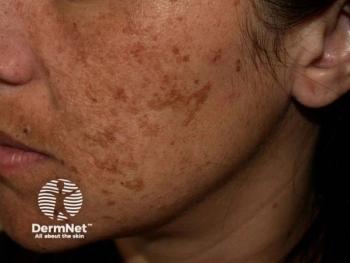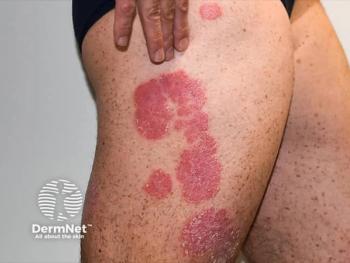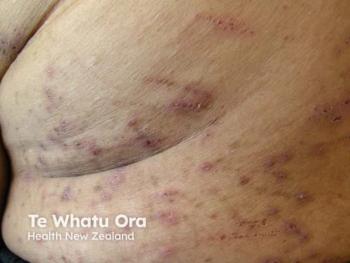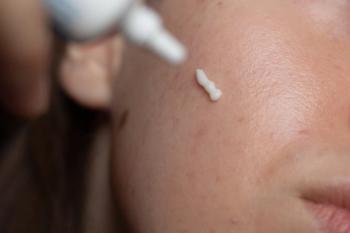
Amy Paller, MD, MS, Discusses Phase 3 Trial Results for Qtorin 3.9% Rapamycin Gel
Key Takeaways
- Qtorin 3.9% rapamycin gel shows promise in treating microcystic lymphatic malformations by inhibiting the mTOR pathway, linked to PIK3CA gene mutations.
- The gel formulation overcomes rapamycin's solubility and stability challenges, allowing effective dermal penetration and minimal systemic absorption.
Paller discusses the promising phase 3 trial SELVA trial results for Qtorin 3.9% rapamycin gel, an investigative treatment for microcystic lymphatic malformations.
At the recent World Congress of Pediatric Dermatology, Palvella Therapeutics announced promising phase 3 trial results for Qtorin 3.9% rapamycin gel, a topical treatment designed to address microcystic lymphatic malformations (MLMs).1 These congenital vascular malformations, often seen in pediatric patients, have been notoriously difficult to treat.2
In an interview with Dermatology Times, Amy Paller, MD, MS, professor and chair of dermatology at Northwestern University Feinberg School of Medicine, and a practicing pediatric dermatologist at Ann and Robert H. Lurie Children's Hospital of Chicago, discussed the treatment and its potential real-world impact on pediatric patients and their families.
Paller, also a lead investigator on the phase 3 SELVA trial of Qtorin, emphasized the significance of this new treatment and how it differs from existing options, elaborating on the science behind the drug, its clinical trial results, and the promising outlook for its real-world application.
Understanding the Pathophysiology of MLMs
MLMs are a type of vascular lesion caused by pathogenic variants in the PIK3CA gene. Paller explained that 80% to 90% of isolated lymphatic malformations are linked to mutations in this gene, leading to the activation of the mTOR pathway, which results in excessive cell proliferation and the formation of these malformations.
Paller elaborated on the mechanism of action behind Qtorin, stating:
"The mTOR pathway is activated due to a mutation in the PIK3CA gene, leading to the proliferation of endothelial cells and the growth of these lesions. Rapamycin, as an mTOR inhibitor, has been shown—or is hypothesized—to reduce the formation of lymphatic fluid and therefore decrease the size and severity of the lesions."
However, the challenge with rapamycin lies in its solubility and chemical stability, which makes it difficult to administer topically. Paller noted that the Qtorin formulation, a 3.9% rapamycin anhydrous gel, overcame these challenges through innovative chemistry. The gel allows rapamycin to penetrate the dermis, where it can effectively inhibit mTOR activity with limited systemic absorption.
"I think it's important to recognize that one of the issues with rapamycin, which of course, is a well-known drug and often used orally for a variety of things, including after transplants, is that it's very poorly soluble,” Paller explained. “The idea of using it for a topical is made more difficult by that. And secondly, it's not a small molecule...We've got the poor solubility, the large size, and then it's very chemically unstable.”
Phase 3 Trial Results
As the phase 3 trial of Qtorin progresses, Paller discussed the study's design and preliminary results. The trial focuses on patients aged 3 and older with MLMs, evaluating both clinical efficacy and safety outcomes.
In the earlier phase 2 study, patients applied the 3.9% rapamycin gel for a 12-week period, followed by a 4-week observation period.3 Paller reported that both physician and patient assessments showed significant improvement in lesion size, visibility, and symptom reduction, such as bleeding and leakage.
“By week 12, we saw that the majority of patients had marked improvement. The clinicians rated most of the lesions as ‘much improved’ or ‘very much improved,’” Paller said. “And similarly, the patients or caregivers rated them the same. We also saw decreases in leaking and bleeding.”
While the gel did not achieve complete clearance, it successfully reduced the malformations' appearance and alleviated symptoms that have historically been treated symptomatically or with invasive procedures such as surgery or sclerotherapy.
Safety concerns were minimal in the phase 2 study. Paller noted, “We had some very mild side effects—things like pain at the site of application, itching, headaches—but none of these were serious enough to discontinue use. So overall, it’s a very well-tolerated treatment.”
Real-World Impact and the Need for Effective Treatments
The lack of FDA-approved treatments for MLMs has left many pediatric patients with limited options. As Paller emphasized, existing treatments like sclerotherapy or surgery often come with complications and offer only partial relief.
“These malformations are actually more common than people realize. There’s a real unmet need for something that’s safe and effective,” she said.
The real-world implications are profound, as the topical gel can reduce the need for invasive treatments, improve the quality of life for patients, and simplify care management for families, Paller emphasized.
Looking Forward: Future Applications and Broader Implications
Beyond its use for MLMs, Paller sees the potential for rapamycin-based treatments to help with other dermatologic conditions. She mentioned that inhibiting the mTOR pathway could also have applications for other rare skin conditions, as well as more common dermatologic issues.
“It opens the door to potential use for a variety of other skin disorders, and something like this could be useful for other rare problems, like epidermal nevi, for example, that may go through this pathway, or even for common problems [like seborrheic keratosis],” she said.
As the trial moves forward with plans for extended follow-up periods, Paller is hopeful that the treatment will become a staple in dermatologic care, particularly for pediatric patients who have long awaited a non-invasive solution for their condition.
References
- Palvella Therapeutics announces Qtorin rapamycin 3.9% anhydrous gel for the treatment of microcystic lymphatic malformations featured in oral presentation by Amy Paller, M, MD, chair of dermatology at Northwestern University’s Feinberg School of Medicine, at the 15th World Congress of Pediatric Dermatology. News release. GlobeNewswire. April 11, 2025. Accessed April 23, 2025.
https://www.globenewswire.com/news-release/2025/04/11/3060025/0/en/Palvella-Therapeutics-Announces-QTORIN-Rapamycin-3-9-Anhydrous-Gel-for-the-Treatment-of-Microcystic-Lymphatic-Malformations-Featured-in-Oral-Presentation-by-Amy-Paller-M-S-M-D-Chai.html - Bouwman FCM, Verhoeven BH, Klein WM, Schultze Kool LJ, de Blaauw I. Congenital vascular malformations in children: From historical perspective to a multidisciplinary approach in the modern era-a comprehensive review. Children (Basel). 2024;11(5):567. Published 2024 May 8.
doi:10.3390/children11050567 - Palvella Therapeutics announces first patients dosed in phase 2 TOIVA clinical trial of Qtorin 3.9% rapamycin anhydrous gel (Qtorin rapamycin) for the treatment of cutaneous venous malformations. News release. Palvella Therapeutics. January 8, 2025. Accessed April 23, 2025.
https://www.globenewswire.com/news-release/2025/01/08/3006228/0/en/Palvella-Therapeutics-Announces-First-Patients-Dosed-in-Phase-2-TOIVA-Clinical-Trial-of-QTORIN-3-9-Rapamycin-Anhydrous-Gel-QTORIN-rapamycin-for-the-Treatment-of-Cutaneous-Venous-Ma.html
Newsletter
Like what you’re reading? Subscribe to Dermatology Times for weekly updates on therapies, innovations, and real-world practice tips.


















